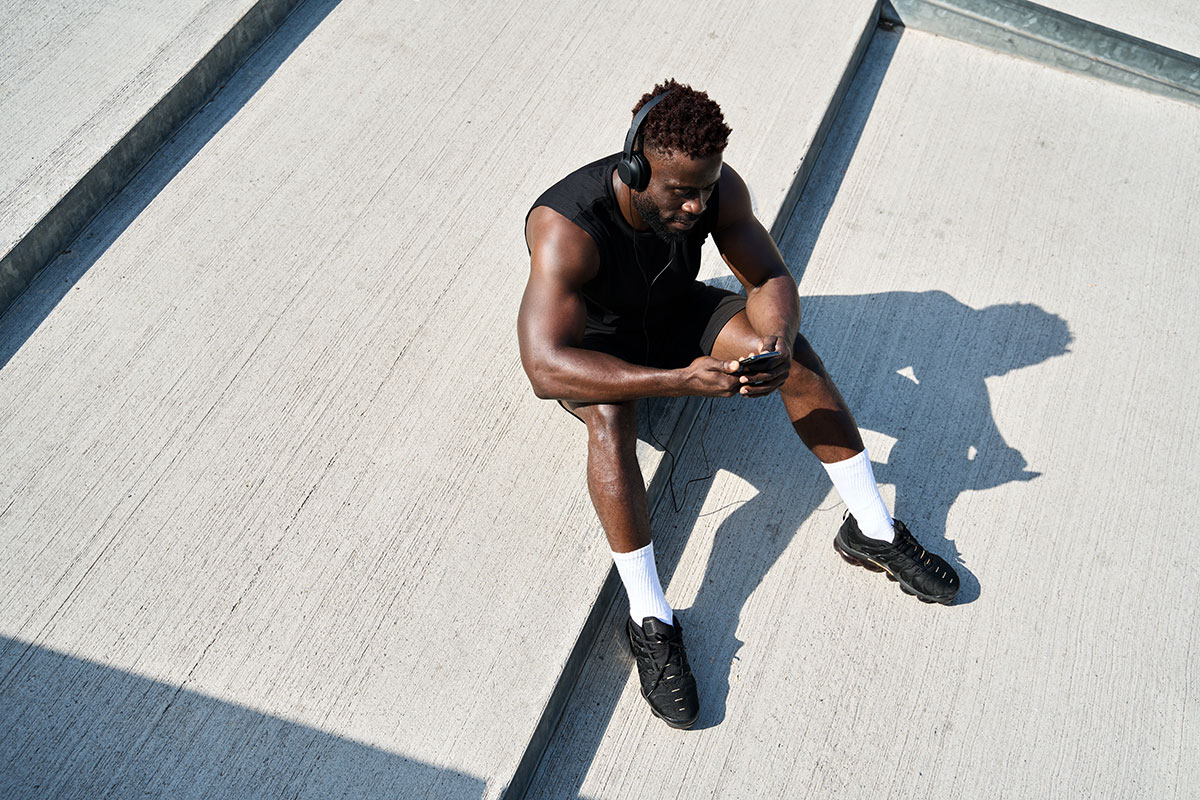Should You Use ChatGPT for Fitness?

In this digital age, many innovative tools and platforms have emerged to assist people looking to become healthier, fitter and happier. From apps counting macros to wearable HRV devices, few have been as polarising as ChatGPT, an advanced language model developed by OpenAI. With its ability to generate human-like text, ChatGPT has been harnessed in countless ways, one of which is to provide personalised fitness plans and individual workouts.
Could you tell that the introduction was written by AI? Such is the disruptive power of ChatGPT, which can also generate tailored fitness plans based on individual needs and goals. In January 2023, the month when many dedicate themselves to new fitness resolutions, visits to the AI platform increased by 131%.
It’s theorised that this technology eliminates the need for costly personal trainers or time-consuming research and allows users to access expert-level guidance at their fingertips, all for free. By simply interacting with a platform like ChatGPT, individuals can receive comprehensive and customised workout routines, diet recommendations, and lifestyle tips, all tailored to their specific preferences and objectives.
However, with the power of this technology comes the challenge of trust. ChatGPT’s ability to mimic human conversation can sometimes blur the line between genuine expertise and misinformation. As users rely on the guidance provided by the AI model, there is a potential risk of receiving inaccurate or misleading advice. Misinformation, whether unintentional or malicious, could have detrimental effects on an individual’s health and well-being.

To understand the topic from an industry perspective, we spoke to Tom Hall, who specialises in 1-2-1 and online coaching for performance across a range of disciplines. I asked him specifically about the risks involved and the pitfalls that are associated with relying on an AI platform. “It’s not personal, or pertained to the client whatsoever. It will discuss the goals and draw on information from lots of different resources,” he said. “You can’t be sure that it’ll be absolutely correct for that person at that intensity. It seems to lack the minutiae that you might need when writing a programme properly, especially when writing from a strength and conditioning background.”
The research that AI platforms like ChatGPT draws upon, Hall argues, could be not just decades old, but structurally incorrect. “It seems to lack a lot of stuff,” says Hall. “It spits out anything and it won’t be ordered correctly, exercise order seems to be off and it draws information from possibly research that’s been 10, 15 or 20 years ago.”
It can’t differentiate between what is current now and what was current 20 or 25 years ago, when Arnie was training.”
As Hall says, an important discussion point in this debate is the age of responsive AI tech. Using ChatGPT as an example, the technology is still very much in its infancy. At the time of writing, it’s only six months old — the popular chatbot was released in November 2022 — and, as it admits itself, has “limited knowledge,” and “may occasionally generate incorrect information,” or “produce harmful instructions or biased content.”
For Andrew Tracey, a fitness editor at Men’s Health with over 18 years in health and fitness as a trainer, coach, nutritionist and writer, ChatGPT’s genesis holds greater promise than many realise, especially when it comes to designing (or ‘programming’) workouts. It could be just a waiting game.
“In the near future, ChatGPT will be far more efficient than me, because it has access to the entirety of the internet,” he says. “Using myself as an example, I’ve written plenty that’s on the internet, and ChatGPT has access to everything I’ve ever written, and everything else anyone has ever written.”

Using the internet to access fitness and bodybuilding lore, however, is nothing new. “You can go online and you can find programmes from the best strength coaches in the world for free,” says Tracey. “Yet, you go to a personal trainer to get your workouts in.” What people are paying for, he explains, is accountability and “having that relationship with somebody, whether people realise that or not,” he says. “That’s not replaceable at this time. Having that buy-in with a human being is the biggest point of efficacy for personal and online training.”
Hall speaks to a similar point. “I think people can get the generic content from AI,” he explains. “It’s used a lot in email writing and content output. For personal trainers, training is still very personal, and AI is not there yet, as it lacks personality and is very ‘wooden’. People won’t buy into an AI, because it doesn’t have the personality that trainers have.”
It’s not just in fitness that artificial intelligence is causing a stir. Providing information but on a far broader scale can cause mixed reactions for nutritionists like Mays Al-Ali. “ChatGPT is very useful to get instant information on any nutrition topics you may need. It’s very quick and efficient – however sometimes the information is not fully accurate or balanced,” Al-Ali, also trained in nutritional therapy and naturopathy, explains. “The information is topline information that can be found on Google and it doesn’t use the latest research and isn’t balanced from different viewpoints.”
While “it can be useful to produce basic meal plans and basic recipes,” says Al-Ali, “it should be avoided by people who use it as a replacement for 1-1 nutrition advice. It cannot and will never replace the work of a qualified and experienced nutritionist. It won’t know who you are, how active you are, what foods your body responds well to when questioning,” she explains. “A large amount of experience, training and skill is needed to analyse a clients diet, emotional wellbeing and past medical history.” Inevitably, this could include clients looking to improve their relationship with food, particularly after experiencing eating disorders.
“A key part of how I work with clients is to tailor nutrition advice to their needs whilst taking into account their emotional state especially when it comes to supporting clients with eating disorders,” says Al-Ali. “ChatGPT can be extremely dangerous for these types of clients.”
As Hall, Tracey and Al-Ali attest, there can be benefits, as Tracey puts it, to the “democratisation” of this information, including those on the beginning of their health and fitness journey. “If you do really care about helping people, as so many trainers claim to do, then you should want it to be available to absolutely everybody,” he says.
Utilising ChatGPT for fitness and nutrition offers undeniable benefits such as a vast source of information that is readily available, affordable and accessible to those seeking guidance and has clear appeal for individuals with limited resources. However, it remains crucial to recognise that ChatGPT falls short in replacing human connection and accountability.
The absence of personalised interaction and tailored guidance may hinder the development of a meaningful relationship between individuals and their fitness or nutrition journeys. Striking a balance between leveraging the advantages of technology and embracing human support remains essential for achieving long-term success in health and well-being. Which is exactly why we do it, right?


















